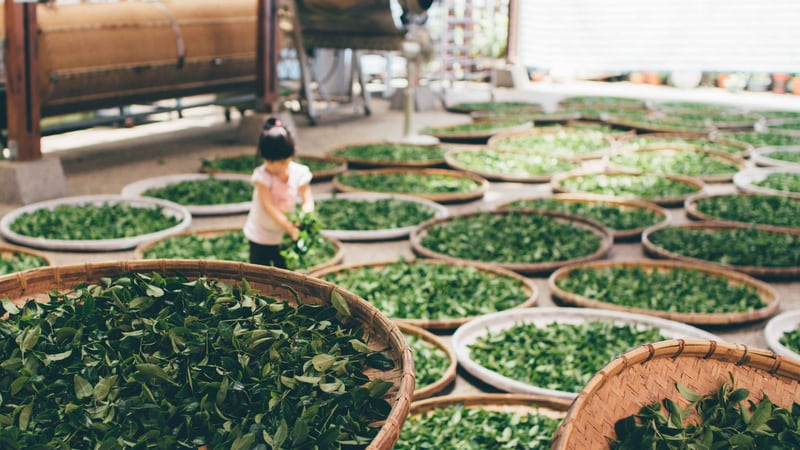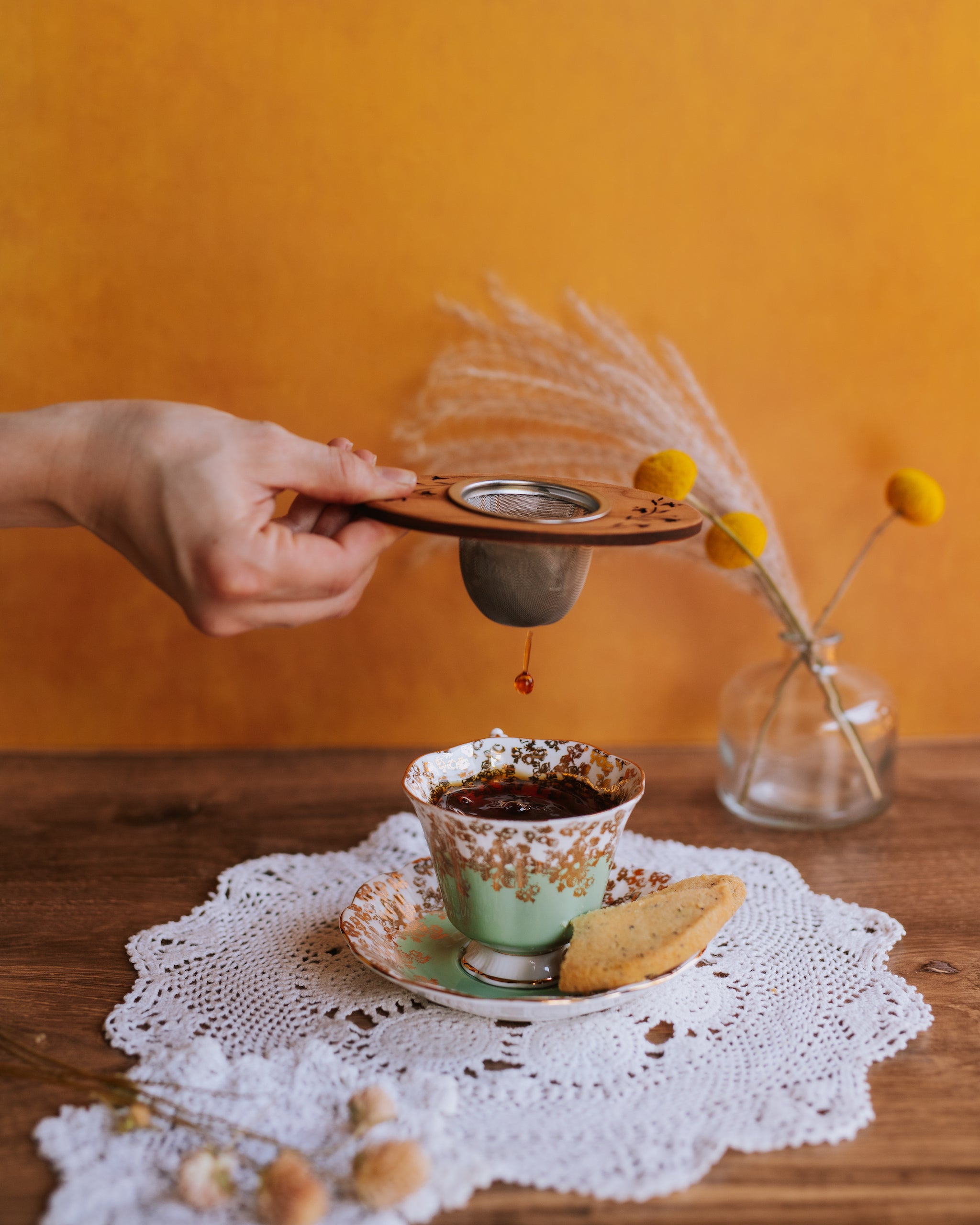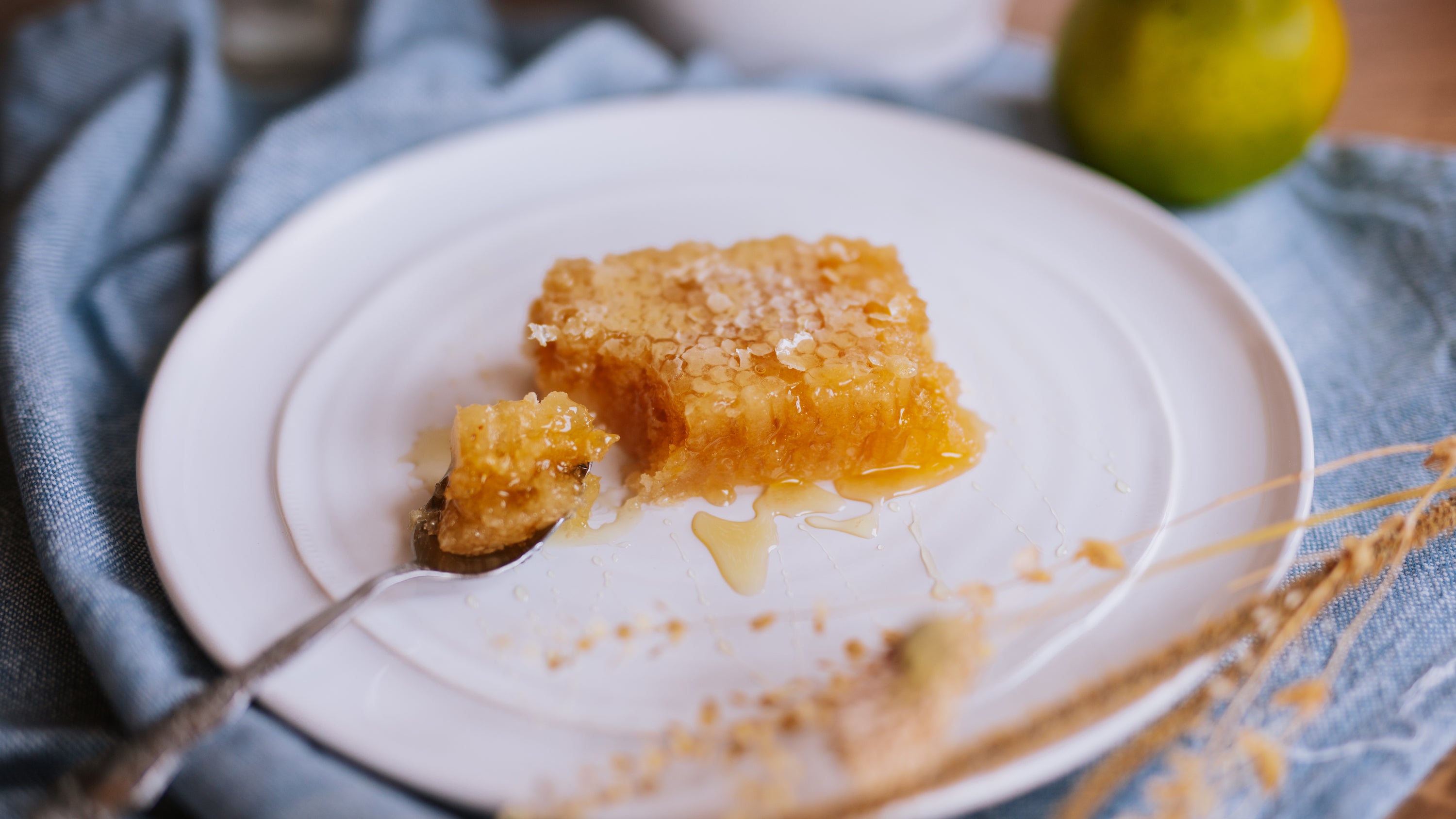
When you think about tea, what countries come to mind? The typical countries of China, Japan, and India probably come pretty quickly, but did you know that tea is grown all around the world? Different regions lend themselves better to different types of tea such as black teas, green teas, and oolongs.
Tea plants thrive in warm, humid areas with consistent rainfall throughout the year. The ideal temperatures for tea growing is between 64.5 and 68 degrees Fahrenheit, however there could be fluctuations at night. Climate can influence the volume and quality of the harvests. Excessive humidity produces inferior crops to areas with drier weather. Higher altitudes improve the quality of the harvest, but it also limits the output. Another important factor is sunlight, which is required in order to develop the essential oils that give tea its aromas. Diffused light is the most beneficial, which is why many plantations plant tall trees in regular rows. The trees help to stabilize the soil as well as filter the sunlight. Tea plants have a low tolerance for windy conditions.
Asia
Asia is most likely the first region that pops into your head when asked where tea is grown, and China and Japan are probably the countries that you think of specifically. However, there are so many countries throughout Asia that grow and produce tea. Taiwan, India, Nepal, Sri Lanka, South Korea, Thailand, Laos, Myanmar, Vietnam, Malaysia, Indonesia, Bangladesh, and Papua New Guinea are countries that also grow delicious teas.
China
China produces every type of tea, but green tea seems to be the favorite for local tea drinkers. The cultivation of tea is concentrated in the southeastern provinces such as Fujian, Zhejiang, Yunnan, and Anhui.
Fujian province is well-known for the largest varieties of teas, but they are best known for white, green, jasmine, high mountain oolongs from the Wu Yi Shan mountain range, and smoked teas.
Zhejiang province is exclusively known for green teas, more specifically gunpowder teas and Long Jing.
Yunnan province has been one of the two largest Chinese black tea producers for 60 years. They are also a principal region that produces Pu Erh, aged tea that is fermented and compressed into cakes.
The Anhui region is known for high quality teas while also having relatively limited production. They are famed for their spring harvest green teas as well as black teas.
Taiwan
Taiwan is an island located beneath the Tropic of Cancer and has the ideal conditions for producing tea. Over half of the territory has high altitudes which lends itself well to growing certain oolongs. Some of the oolongs from Taiwan are rolled into dense pearls, which helps to keep the leaves fresh and prevent crumbling, such as Dong Ding, Jin Xuan, Ali Shan, Shan Lin Xi, and Nantou Four Seasons. Taiwan is also home to the bug bitten Bai Hao oolongs as well as some black teas and green teas. Taiwan has been known for over a hundred years for lightly oxidized teas, so it is interesting that the plantations have expanded more into production of dark teas.
Japan
Tea is an integral part of Japanese culture. The country consumes so much tea, that it is necessary to import tea from China, Indonesia, and Vietnam in order to have any product to export. Japan is most well known for green tea, but there are a few examples of black teas that are exported. Matcha, Sencha, and shade grown green teas are most commonly associated with Japan.
India
Tea is popular in India, but few continue the traditional British ritual of tea drinking. Throughout their society, chai has become a daily treat combining black tea with spices, sugar, and boiling whole milk. India produces black tea almost exclusively and there are three regions that are the principal tea producers for Indian tea. They are Assam, Darjeeling, and Nilgiri.
Darjeeling is India's best known and most prestigious tea producing region. Darjeelings are almost entirely reserved for export due to the high prices. There are four annual harvests, which all have distinct flavor profiles. The July- August monsoon season crop is considered mediocre quality.
Assam is in northeastern India between Bangladesh, Myanmar, and China. It produces almost half of Indian tea. The four harvests possible are spring, summer, monsoon, and autumn. However, the springtime crop is rarely plucked due to the fact that it is less sought after than the summer harvest. Most production occurs between April and October. Fun fact: Your English Breakfast tea is a black tea from Assam!
Nilgiri is located in southern India and is the second largest tea producing region. Tea is harvested in Nilgiri year-round without interruption. Almost the entire region produces CTC leaves, which is a process that prepares the leaves for tea bags (CTC stands for Crushing-Tearing-Curling.)
Nepal
Nepal produces mostly black teas which are usually used in tea bags. There are three tea producing regions in Nepal: Terai, Ilam, and Dhankuta. The teas from Ilam and Dhankuta are often exported at very high prices.
Terai is a lowland area that produces tea that is primarily used for CTC production.
Ilam produces lovely teas that try to mimic Darjeelings. Some Darjeeling plantation owners have bought tea from Nepal and add it to their Darjeeling harvest in order to increase their production, which changes the tea from single origin without the consumer's knowledge.
Dhankuta is relatively new to tea production. The plantations in this area only go back 15-20 years and were planted with young tea plants selected from the best varieties. The harvest schedule is exactly the same as the Darjeeling region in India. Small producers play an important role in this region due to the lack of large-scale plantations on the British model. Tea is also cultivated in a way that protects wooded areas.
Sri Lanka
Sri Lanka produces black tea almost exclusively and exports nearly 95% of its tea. Tea has little visibility in Sri Lanka culture which is odd considering how many tea plants are around the island. There are six principal areas for growing tea Galle, Ratnapura, Kandy, Nuwara Eliya, Dimbula, and Uva. The teas from the island are distinguished by altitude, not the location where they grow. Fun fact: Our Ceylon Orange Pekoe is grown in Sri Lanka! Orange Pekoe is a specific grade of black tea, although it is unknown where name for this grade originated. We do know that the term has been used since Dutch and British involvement in the trading of tea.
South Korea
Korea is not a major tea producer or avid consumer of tea, despite its ancient history. Teas that are produced in Korea are sold domestically and are usually expensive. Korea produces mostly green teas which are harvested in the spring. There are three tea-producing areas, all located in the southern part of the country. South Gyeongsang is a historic region and home to the oldest tea plantations. Boseong is a little further west and is the peninsula's other large cultivation zone. The volcanic island of Jeju is home to some of Korea's most magnificent plantations. It is home to the most favorable conditions for growing tea; ideal soils, a mild, humid climate, and ample sunshine and rainfall.
Other Tea-Producing Countries in Asia
Thailand was introduced to tea-cultivation in the 1980s by the Chinese community that settled in the Mae Salong region in northern Thailand. Small quantities of excellent quality tea are produced using techniques similar to thosethat originated in Taiwan.
Laos began growing tea when small-scale coffee producers were hit hard by falling prices. They produce primarily compressed teas from wild plants near the Chinese border.
Myanmar is the historical birthplace of tea. Tea grows wild in their forests, and the Burmese have harvested and produced tea throughout their history. Tea cultivation has also developed in the mountainous region in the north and east. They have been influenced by the manufacturing practices of the Yunnan province in China.
Other Asian countries that produce tea are Vietnam, Malaysia, Indonesia, Bangladesh, and Papua New Guinea.
Africa
Tea was introduced to Africa by the British in the late 19th century. What started in South Africa and Malawi expanded to Mount Cameroon and Tanzania with help from German colonists. Many other countries adopted the cultivation of tea during the 20th century and are now some of the leaders in the tea trade. Africa's teas are primarily classified as CTC, but there are some artisanal growers experimenting with teas inspired by recent developments in China, India, and Japan. Principal tea-producing countries are Kenya, Malawi, Uganda, Burundi, Tanzania, Zimbabwe, Mozambique, Rwanda, Ethiopia, Cameroon, Congo, Mauritius, South Africa, Zambia, Reunion, Madagascar, Mali, and Seychelles.
Around the Black and Caspian Seas
Tea was introduced to the Caspian region through trade routes, and tea was initially a luxury item imported from distant locations. It wasn't until later that tea became a part of the indigenous culture. After numerous failed attempts, tea was finally successfully grown in the mountainous areas between the Black and Caspian Seas. The Mongols and merchants who travelled the Silk Road are credited with bringing tea to this region.
Russian Teas
Russia produces black tea primarily for domestic consumption. Extensive plantations in Georgia made the former USSR the world's fifth-largest producer. Teas from Russia are sometimes referred to as "Russian teas" because they are prepared in a samovar. They shouldn't be confused with "Russian-style" varieties which are blended Chinese black teas, sometimes flavored, that were popular in the Russian court at the end of the 19th century.
Turkey
Tea consumption came before cultivation in Turkey. Tea was introduced to the Ottoman court in the 15th century but wasn't cultivated until the 1920s, using seeds imported from the USSR. The plantations are mostly located on the south coast of the Black Sea. Turkey is the world's sixth-largest tea producer with most of the tea providing for the country's consumption and leaving a small amount for export.
Other Countries in the Region
Iran, Georgia, Azerbaijan, Montenegro, and Russia are also tea-producing countries in this region.
South America
South American teas don't try to compete with the great teas of Asia. They are exclusively black teas, adapted to the "British taste", and primarily produced for tea bags and American soft drinks.
Argentina
Argentina is the only major tea producer in South America and the ninth-largest in the world. However, most people associate Argentina and Brazil with the yerba maté plant which is used to make the popular South American beverage, maté.
Other Tea-Producing Countries
Peru, Ecuador, Bolivia, Brazil, Guatemala, El Salvador, Panama, and Colombia
North America
While tea cultivation is an ancient practice, it is still relatively new to regions in North America. There are plantations growing throughout the southern states, as well as plantations in Hawaii and even Oregon. The U.S. League of Tea Growers reports that there are 60 farms in 15 states, with many of them starting to branch out into tea growing in 2000 or later, with some only being five years old. Hawaii's volcanic soil is ideal for growing tea. Tea was introduced to Hawaii in the 1800s, but the islands have started to grow their own cultivars. The volcanic soil makes the tea take on a distinct flavor which is recognizable from any other teas produced around the world, which is usually bright with notes of citrus and honey. While the tea production is newer in North America, the growth over the last few decades seems to point towards the United States becoming a region that will continue to expand in the cultivation of tea.
Tea production may vary from country to country, but it's safe to say that no matter the differences, tea is a plant that can and has brought the whole world together. Tea makes it easy to transport yourself from your office desk or couch, to a teahouse in Japan, China, or even Africa.
Resources
Tea Sommelier: a Step-by-Step Guide, by Delmas François-Xavier et al., Abbeville Press Publishers, 2018, pp. 102–124.
Helmer, J. (2017, March 28). Pinkies up! A local tea movement is brewing. NPR. Retrieved from https://www.npr.org/sections/thesalt/2017/03/28/521380607/pinkies-up-a-local-tea-movement-is-brewing.
Chan, K. Y. L. (2015, May 8). Hawaii's volcanic soil makes the state a tea-producing paradise. Eater. Retrieved from https://www.eater.com/drinks/2015/5/8/8558789/the-rise-of-tea-in-hawaii.



